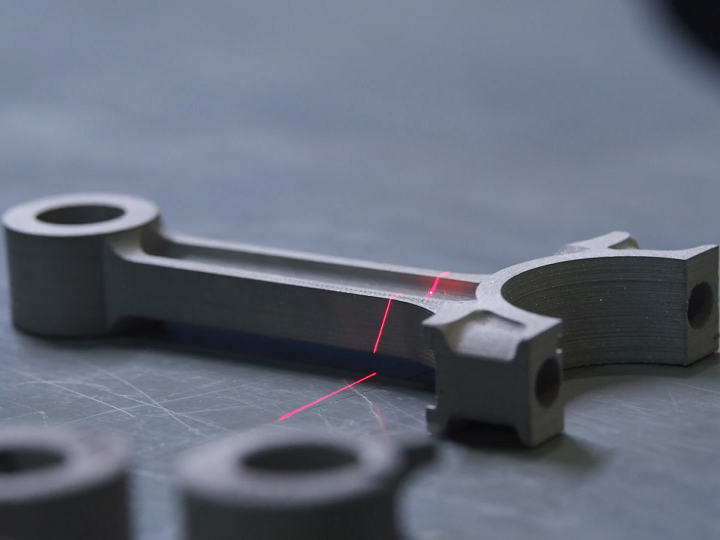Metal mass production 3D printing leader Desktop Metal (NYSE: DM) just announced that it has received a pretty massive order, worth $7.9 million, for its binder jetting additive manufacturing systems. The customer is an unnamed major German automobile manufacturer, which plans to use Desktop Metal’s printers to mass produce metal automotive powertrain components at scale. The 3D printing unicorn‘s metal 3D printers are already being used by other car makers, such as Ford, which just proves that the automotive market is full of viable AM applications.
“We are proud to be working with a number of major, global automotive OEMs to expand their adoption of additive manufacturing for the series production of end-use car components. This milestone order is evidence of the performance and economics that make our binder jetting solutions the most advanced in the world and a testament to our teams who have been working tirelessly to help make the vision of mass production via additive manufacturing a reality,” Ric Fulop, Founder and CEO of Desktop Metal, stated in a press release.
Powertrain components are the ones that generate a vehicle’s power and deliver it to the road surface, so they’re pretty important. The engine, drive shafts, transmission, and final drive are all powertrain components, though sometimes the term only refers to the engine and transmission, including other components only if they’re critical to the transmission.
Desktop Metal has plenty of experience 3D printing parts for the automotive industry, including powertrain components like piston heads for reciprocating engines, and connecting rods, which are used in combustion engines to transmit power from the piston head to the crankshaft. The company’s automotive customers include the aforementioned Ford, in addition to Renault, the Continental Automotive Group, Turner Motorsports, and BMW.
While the use of 3D printing is not yet widespread in this industry, many more automobile manufacturers are starting to recognize its benefits; supposedly, Desktop Metal customer Ford is also using ExOne’s binder jet technology to make car components, and it’s said that Volkswagen may be producing car parts with HP’s binder jet 3D printing. The car manufacturers taking advantage of AM used to mainly rely on laser powder bed fusion or direct metal laser sintering, which can be pretty pricey, require a lot of post-processing, and can only use a limited amount of materials. Binder jetting seems to be the AM technology of choice these days for automotive components.
“Taken together, cost, materials, and speed challenges have resulted in additive manufacturing making only minor inroads into auto manufacturing, and most parts continue to be produced by traditional methods, like casting, forging, machining and stamping,” Desktop Metal wrote in its Manufacturing the Cars of Tomorrow eBook.
“The printing technology developed by Desktop Metal is poised to solve those problems and more, and make it possible for car makers to use additive manufacturing more widely than ever before.”
While the specific 3D printer this new automotive customer will be using hasn’t been specified yet, Desktop Metal’s Production System, with the company’s Single Pass Jetting (SPJ) technology, is the one most typically used for high-volume production, due to its speed, simpler post-processing, and price comparable to casting, forging, and machining methods.
